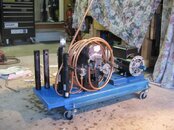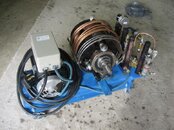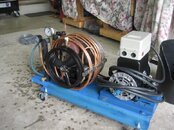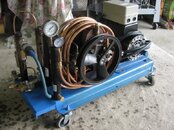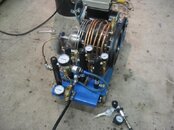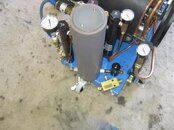Finally got into the plumbing work. I decided to go back to copper. Working pressures for ACR copper are basically about 1000psi, but its way way conservative - burst pressures even at 350degs are ~8000psi. They spec low because the piping on ACR systems just don't get servicing during their some 20 yrs of bobbing about on a roof somewhere. Given that its pretty cheap to get vs stainless ie as easy as walking into Home Depot, I can afford to replace it if I have to. Same goes with brass fittings, though you have to pay attention to anything that's cast, like T's and X's. Still they are overly conservative too, being cut from solid bar stock. 314SS stuff, especially Swage-lok, is super nice, but expensive and a PITA to get. I'll keep a stink-eye on this area just incase.
I was toying with building a wild-leg transformer for the 3phase motor I have, but the cost of doing that vs buying a new single phase 5hp was a wash. So I went single phase. I also picked up a magnetic starter that will accept a high pressure switch. I'll probably still make the transformer, but that'll be a later project.
My second stage head has some good rust in it, so in this compressors former life it was making first stage water. Its not supposed to do that if pressures and temp are in spec, but I lucked into got two more used Rix coalescers, so plumbing is now one for each stage, with two for the third stage. Had to weld up an extension for the extra coalescers...
I was toying with building a wild-leg transformer for the 3phase motor I have, but the cost of doing that vs buying a new single phase 5hp was a wash. So I went single phase. I also picked up a magnetic starter that will accept a high pressure switch. I'll probably still make the transformer, but that'll be a later project.
My second stage head has some good rust in it, so in this compressors former life it was making first stage water. Its not supposed to do that if pressures and temp are in spec, but I lucked into got two more used Rix coalescers, so plumbing is now one for each stage, with two for the third stage. Had to weld up an extension for the extra coalescers...




